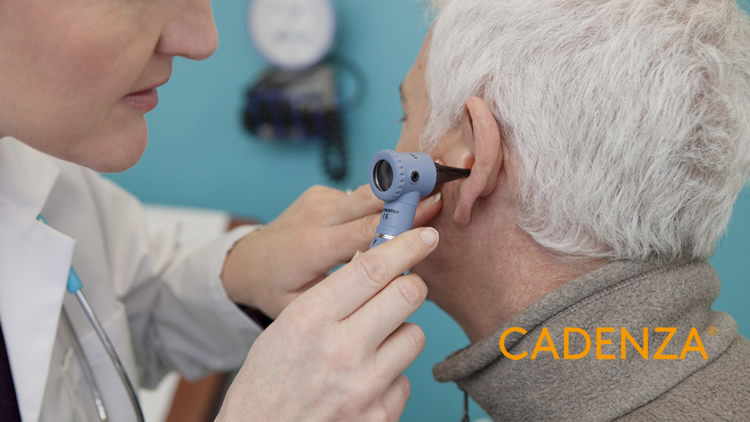How to choose OTC hearing aids for otitis media users
What precautions should otitis media patients pay attention to when choosing OTC hearing aids to ensure the normal use of hearing aids without aggravating the middle ear inflammation in hearing-impaired patients?
In daily life, with regard to ear diseases, otitis media is not only distributed in a wide age range, but also has a high prevalence rate. Many patients have gradually developed from acute otitis media to chronic otitis media due to various reasons. Often these hearing-impaired patients also have permanent hearing loss and need to wear hearing aids. However, chronic otitis media causes patients to relapse from time to time every year, and there are always pus and water discharge several times a year, which brings troubles to patients.

1.Preferred behind-the-ear hearing aids
First of all, the ear of otitis media patients with hearing impairment is most afraid of the closed environment, because the shell of the in-ear hearing aid is customized according to the shape of our ear canal, so the shell completely fits the ear canal, which will inevitably form a closed environment in the external auditory canal. If we choose to customize hearing aids in the ear, it is likely to induce otitis media in patients with hearing impairment. In the case of behind-the-ear hearing aids using earplugs, compared with in-the-ear custom hearing aids, the environment of the external auditory canal is more unobstructed, which is beneficial to prevent the recurrence of otitis media in patients.
2. RIC hearing aids are not recommended
Under normal circumstances, the earplugs of RIC hearing aids will be more breathable. This advantage of RIC hearing aids is helpful for patients with otitis media to keep the external auditory canal open. However, since the microphone of the RIC hearing aid is located in the ear canal, once the inflammation of the user with otitis media occurs, it will easily affect the normal use of the hearing aid speaker. The protective structure at the front end of the RIC hearing aid speaker is more than enough to deal with the ordinary ear canal, but there may be pus or fluid in the ear canal of otitis media users. Such a complex ear canal environment is difficult for the speakers of the RIC hearing aid to deal with. This will inevitably lead to an increase in the damage rate of the RIC hearing aid speaker, and the replacement of a new speaker is not a small cost.
3. Matters needing attention when choosing in-ear hearing aids
Some hearing-impaired patients still choose in-ear hearing aids due to multiple considerations. They need to pay attention not to wear hearing aids for a long time in daily life, and take them off for ventilation at intervals to prevent the recurrence of otitis media. At the same time, you need to be mentally prepared. Due to the custom-made hearing aids in the ear, the external auditory canal is kept in a closed state for a long time, which may lead to a higher probability of otitis media recurrence. Once middle ear inflammation occurs, you should immediately stop wearing hearing aids until the inflammation completely disappears.
4. Daily cleaning of hearing aids
Patients with otitis media hearing impairment need to pay attention to the "cleanness" of their hearing aids. At the same time, due to the increase in secretions in the ear canal (not necessarily pus or fluid), patients also need to pay attention to cleaning the ear canal and try to keep the ear canal as clean and unobstructed as possible.
Have you learned the recommendations for matching OTC hearing aids for patients with otitis media and hearing impairment? If you are not sure, please feel free to contact us for help.
- Recent Posts
- The OTC Hearing Aid Wholesale Core – Customization, Compliance, and Smart Auditory Tech
- CADENZA A6: 100H Battery and 32-Channel Tech for OTC Hearing Aid Differentiation
- OTC Hearing Aid Dividends: CADENZA OEM/ODM Strategy for CVS/Best Buy Expansion
- Beyond Price: Why Global Distributors Choose CADENZA for OTC Hearing Aid Compliance and Volume
- Power Your Private Label: CADENZA Offers Unmatched OEM/ODM Scale for the OTC Hearing Aids
- The $100 Billion Question: How CADENZA Makes Quality Hearing Aids Affordable for Everyone
- Hearing is Believing: CADENZA Hearing Delivers Premium Quality Without the Prescription Price
- Discreet RIC Hearing Aids for a Natural Fit
- Smart Hearing Aids: App Control & Bluetooth for OTC
- Types of Hearing Aids
- BTE hearing aids
- ITE hearing aids
- Instant fit CIC hearing aids
- Rechargeable hearing aids
- RIC hearing aids
